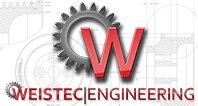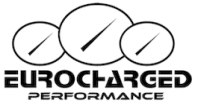Results 1 to 8 of 8
-
01-19-2011, 06:38 AM #1
Ford Bobcat dual fuel E85 direct injected motor
This is a great way to utilize E85 and direct injection:
"A radical twin-fuel engine from Ford, code-named “Bobcat,” that variably blends gasoline and ethanol on demand to realize diesel-like performance continues to make steady progress in its development, according to presentations made by the automaker to the Department of Energy and Society of Automotive Engineers in April. The presentations also provide a first look at the engine’s architecture and make some remarkable claims about “E85-optimized” engine efficiency versus size.
The Bobcat engine starts with a small turbocharged engine with separate gasoline and ethanol (E85) fuel injectors for each cylinder. The gasoline system mixes fuel and air in the motor's intake manifold using port injection. The second system uses direct injection to introduce small amounts of ethanol directly into the combustion chamber to control premature detonation, or knock, which results from the high temperature and pressure of a turbocharged engine. The ethanol prevents knock by cooling the air/fuel mixture until the engine is ready for combustion. With knock suppressed, the compression ratio can be increased.
Ford’s engineering partner, Ethanol Boosting Systems, LLC of Cambridge, Mass., has trademarked the term “DI Octane Boost” to describe the process; the direct injection of ethanol effectively increases the octane of regular gasoline from 88-91 octane to more than 150 octane.
The percentage mix of gasoline and ethanol varies according to load. In low- to medium-load conditions, only port-injected gasoline may be required. Direct-injected ethanol is added and increased as a function of load but only in the amount necessary to prevent knock. Using such technology, a 5.0-liter V-8 Bobcat engine could potentially produce 500 horsepower and 750 pounds-feet or more of torque.
Two 3-D computer-rendered diagrams included in Ford’s DOE presentation show the front and rear views of such an engine using a 90-degree V-block design. Two massive air/water heat exchangers sit atop the engine to cool turbocharged air before it enters the throttle body and intake manifold. Twin turbos sit on the lower right and left sides.
A separate engine cutaway diagram of a Bobcat motor shows the positioning of a gasoline port injector and ethanol direct injector. The gasoline and ethanol would be stored in two separate fuel tanks.

EBS claims that relative to today’s common port fuel injected gasoline engines in cars and light-duty trucks, direct-injection ethanol boosting would provide a fuel efficiency gain for typical combined city/highway driving of 25 to 30 percent, at an incremental cost of $1,100 to $1,500, depending on the size of the vehicle. The efficiency gain and torque are comparable to current turbodiesel engines, like Ford’s 350-hp/650 lbs.-ft. 6.4-liter Power Stroke, but at about a third of the cost and with the advantage of cleaner emissions without expensive exhaust aftertreatment hardware.
Ethanol boosting also promises 5 to 10 percent greater fuel economy than Ford’s new line of gasoline-turbocharged direct-injection EcoBoost engines, which it’s based on. Ford’s DOE presentation says, “The E85 optimized engine and the dual fuel concept are logical extensions of Ford’s ‘EcoBoost’ strategy.”
Another way to measure efficiency, regardless of engine architecture, is through a metric called Brake Mean Effective Pressure. BMEP quantifies the amount of work an engine can do versus its displacement by measuring the average pressure exerted on an engine’s pistons. The more efficient an engine is, the higher its BMEP score.
According to Ford’s SAE presentation, an experimental 3.5-liter GTDI EcoBoost engine modified with E85 direct injection and gasoline port fuel injection run on a dynamometer achieved a BMEP score of 305 psi (27 bar), which translates to approximately 553 pounds-feet of torque and 316-hp at 3,000 rpm (flat torque curve from 1,500 to 3,000 rpm). The experimental engine was limited by the engine block’s ability to handle higher compression ratios. In comparison, a standard GTDI EcoBoost engine on a dyno was rated at 17 bar, which translates to approximately 350 pounds-feet of torque and 300-hp at 4,500 rpm (flat torque curve from 1,500 to 4,500 rpm).
As we mentioned earlier, ethanol use increases with engine load. A potential drawback to the Bobcat engine would be access to an ethanol refueling infrastructure, especially when a truck is working hard pulling a trailer or climbing hills.
Ford’s SAE presentation provides several range estimates for refueling a 5.0-liter Bobcat V-8 with a 10 gallon E85 tank and 26 gallon gas tank compared to a current Ford F-150 with a 5.4-liter V-8 and 26 gallon gas tank. Under mild driving conditions, the 5.0-liter E85 tank might have to be refilled only once every 20,000 miles and the gas tank refilled every 528 miles. Today’s 5.4-liter V-8 is said to have a 486 mile range under these conditions. However, an extreme towing scenario with the 5.0-liter V-8 pulling a fully-loaded trailer up a constant 6 percent grade could mean refilling the E85 tank as often as every 100 miles. That would be more often than the gas tank, which has an expected range of 243 miles under those conditions. Today’s 5.4-liter V-8 is said to have a 99 mile range under these conditions.
If the ethanol tank did run dry, the Bobcat engine could operate indefinitely with lower performance using only gasoline until a source of E85 could be found.
Under most operating conditions, however, Ford’s Bobcat engine could be the right powertrain at the right time to meet newly mandated corporate average fuel economy requirements that require fuel efficiency standard for all light trucks (crossovers, pickup trucks, SUVs and vans) to rise to 30 mpg by 2016, from 23.1 mpg today.
Will it work in the real world? Ford will try out its theories outside of computer simulations and the laboratory before the end of the year when a Bobcat engine is tested in an F-Series pickup for the first time."BRAND NEW IN BOX 991.2 standard/non-pse SPW cat bypass pipe for sale - $899 shipped
New generic 991.2 PSE bypass pipes - $499 shipped
-
01-19-2011, 11:46 AM #2
wow, nice find, it will be interesting to see what comes of this and how it can be implemented outside ford.
2007 335i Coupe
Mods: Check the Garage
-
01-19-2011, 12:17 PM #3
Very cool overall, but then you would need two fuel tanks? One for E85 and one for gasoline, would be a pain to have to full two.
Some people live long, meaningful lives.
Other people eat shit and die.
I'm not racist, I hate everybody equally; especially fat people.

-
01-19-2011, 02:36 PM #4
Direct Injection + Ethanol is one of the best combos for knock suppression so far. It's one of the reasons I'm not so sure about selling my 135i, unless it's for a 1M. I think in the future we could have N54's making a reliable 600whp on "pump" fuel, no meth. (and I'm not saying you have to stay stock internals)
-
01-19-2011, 06:19 PM #5
-
01-20-2011, 04:25 PM #6
I understand having to refill a meth tank, but thats an aftermarket unit. This motor is intended for mass production, I dont think the average person would like to have to fill two tank with two seperate fuels.
Some people live long, meaningful lives.
Other people eat shit and die.
I'm not racist, I hate everybody equally; especially fat people.

-
01-20-2011, 04:42 PM #7
It really would be best with just E85, or pure ethanol. The problem is there aren't enough ethanol pumps, and not enough ethanol to power every one. So they have to take baby steps like this, for example.
-
01-20-2011, 10:12 PM #8










 Quote
Quote














Welcome...
NOOOOB: Rick1234